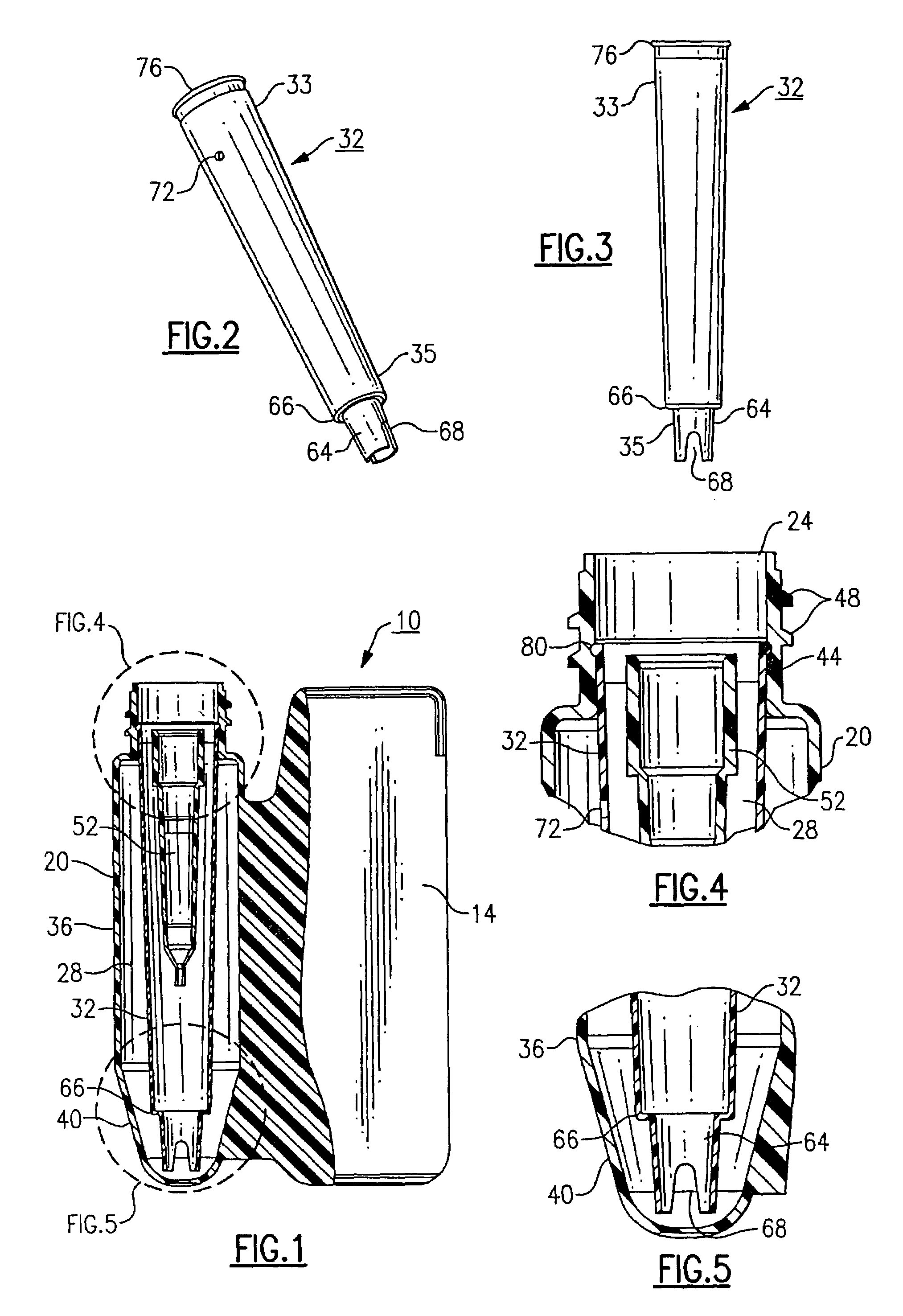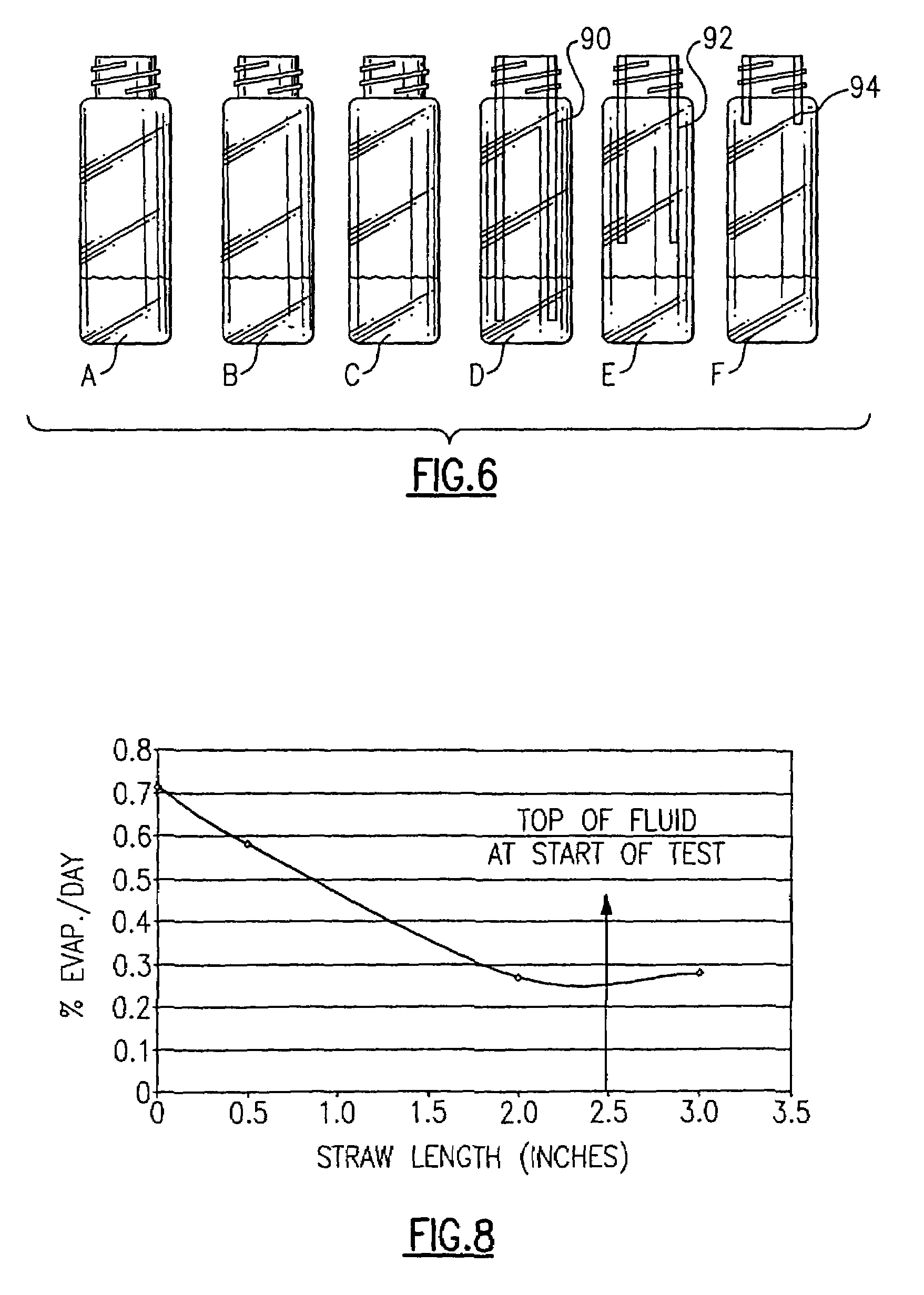Evaporation control for a fluid supply
a technology of fluid supply and evaporation control, which is applied in the field of clinical chemistry, can solve the problems of increasing the cost per test, increasing the overall cost and complexity of the analyzer, and affecting the accuracy of the results, so as to minimize the exposed wet surface area, minimize the cost and complexity, and maximize the path length
- Summary
- Abstract
- Description
- Claims
- Application Information
AI Technical Summary
Benefits of technology
Problems solved by technology
Method used
Image
Examples
example a
Comparison of Evaporation Effects Based on Differing Straw Lengths and Prior Known Evaporation Controls
[0043]As a prologue to the fluid supply illustrated in FIGS. 1-5, and to further point out the inventive concepts achieved by the evaporation control member, a first plurality of different 20 mL bottles, see FIG. 6, were each filled, according to this example, with 4 mL each of a solution of 0.004% Magenta dye in water. This solution produces a measurable absorbance of roughly 2 AU at a wavelength of 540 nanometers. By tracking changes in the absorbance of the solution over time using a spectrophotometer or similar apparatus, changes in the absorbance of the solution and effectively, evaporation rates can be extrapolated which provides a basis for tangible comparison.
[0044]In this example, six (6) bottle designs were tested and compared. These bottles are shown in FIG. 6 and included the following: a standard open bottle, herein designated A, a bottle having a plastic pierceable ca...
example b
Comparison of Wetted Surface Area and Diffusion Length on Evaporation
[0053]As a further example, 4 mL of sample fluid was placed into another plurality of bottles as shown in FIG. 9. The sample fluid for purposes of this example was an identical solution, as defined in Example A, of 0.004% Magenta dye in water. For purposes of this example, different bottle-types, each having open ends, but different geometries, were compared. The first bottle, herein designated as G, is similar to the bottle A from the preceding example. This bottle is an open top bottle having a height of 85 mm, an inside diameter of 19.5 mm and a top neck portion. The second bottle, herein designated H, has an inside diameter of 19.5 mm, but the total height of the bottle is only approximately 45 mm. The third and fourth bottles, herein designated I and J, respectively, were 85 mm in height but had a reduced (9.8 mm) inside diameter. Bottle J was further distinguished in that only 2 mL of fluid were used in order...
PUM
 Login to View More
Login to View More Abstract
Description
Claims
Application Information
 Login to View More
Login to View More - R&D
- Intellectual Property
- Life Sciences
- Materials
- Tech Scout
- Unparalleled Data Quality
- Higher Quality Content
- 60% Fewer Hallucinations
Browse by: Latest US Patents, China's latest patents, Technical Efficacy Thesaurus, Application Domain, Technology Topic, Popular Technical Reports.
© 2025 PatSnap. All rights reserved.Legal|Privacy policy|Modern Slavery Act Transparency Statement|Sitemap|About US| Contact US: help@patsnap.com



